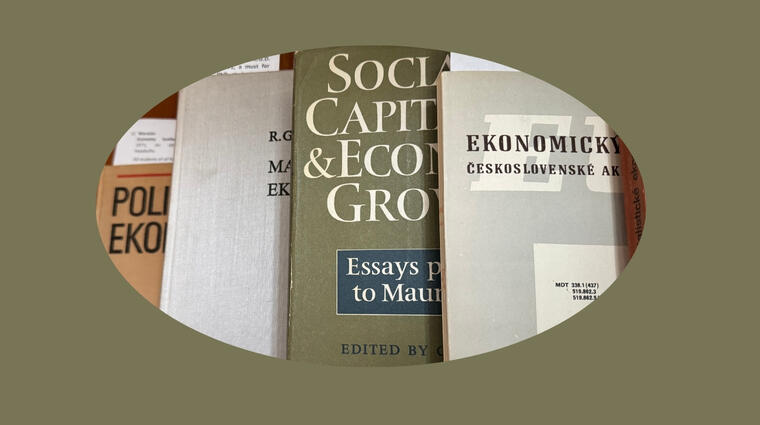35 Years of Economics at Charles University: A Retrospective

35 Years of Economics at Charles University: A Retrospective
We would like to draw your attention to a display assembled by our Emeritus Assoc. Professor Vladimír Benáček, which has been installed in the library at the Institute of Economic Studies, to mark the 35th anniversary of the return of modern economics teaching to Charles University.
The story begins in June 1990, just months after the fall of Communism, when a group of economists launched an exclusive university program in neoclassical and institutional economics—fields that had been banned or discriminated against for over four decades.
The small yet important exhibition retraces how this became possible. Nearly all of our Institute’s “founding fathers” came from the Academy of Sciences, where, under the surface of ideological conformity, an intensive interest in Western economics persisted. Despite no possibility to publish or correspond with the West and technological constraints, these researchers developed complex quantitative models of the whole Czechoslovak economy and maintained informal networks of discussion and learning, often outside official structures.
Within the exhibit and in the accompanying text, you can learn how these individuals, some of whom later became key public figures, transformed their underground expertise into an open academic program from the very outset. The display highlights the early curriculum, the people who taught it, and the resources they used. It also provides a broader view of the intellectual environment in which Czech economics reemerged after 1989 — one shaped as much by quiet resistance before November 1989, as by formal policy change afterwards.
The exhibition is a tribute to the leading founders of IES: professors Jiří Hlaváček and Michal Mejstřík, whose strategic decisions continue to shape the concept of IES to this day. At the same time, it can be seen as an offering of a place of reflection: on how knowledge survives under pressure, how institutions evolve, and how teaching can shape new generations.
We would like to warmly invite all academics, students, alumni, and others who wish to reminisce or learn more about the beginnings of our Institute—or who would like to revisit a crucial chapter in the university’s post-Communist transformation—not to miss this display, which will be on view until October 31, 2025.







